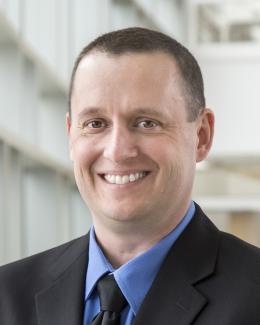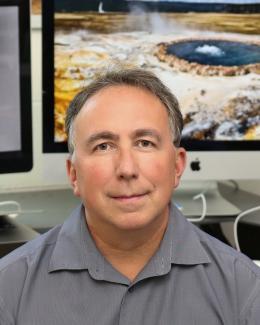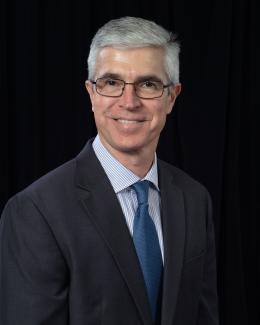Three ORNL scientists have been elected fellows of the American Association for the Advancement of Science, or AAAS, the world’s largest general scientific society and publisher of the Science family of journals. Credit: ORNL, U.S. Dept. of Energy
Three scientists from the Department of Energy’s Oak Ridge National Laboratory have been elected fellows of the American Association for the Advancement of Science, or AAAS, the world’s largest general scientific society and publisher of the Science family of journals.
“The range of scientific accomplishments represented in this honor demonstrates the breadth of exceptional work taking place across our laboratory,” said ORNL Director Thomas Zacharia. “I congratulate these researchers on being recognized by their peers for advancing their fields.”
AAAS fellows are a distinguished cadre of scientists, engineers and innovators who have been recognized for their achievements across disciplines ranging from research, teaching and technology, to administration in academia, industry and government, to excellence in communicating and interpreting science to the public.
ORNL’s new AAAS fellows include:
Shaun Gleason, Cyber Resilience and Intelligence Division director
In his current role, Gleason oversees a research and development portfolio focused on adversarial intelligence and resilient complex systems, including cybersecurity research, augmented analyst intelligence, cyber identity and biometrics, cyber-physical systems, energy and control systems security, and vulnerability science.
His fellowship election recognizes him “for distinguished contributions in computer vision and data science and for exceptional organizational leadership resulting in scientific discoveries and industrial impact in the fields of biomedical and computational science.”
In his 33 years of service at ORNL, he has also served as director of Computational Sciences and Engineering Division, director of the Office of Institutional Planning and group leader for Imaging, Signals and Machine Learning. His own research and development experience includes applied image processing and machine learning for industrial, security, and medical imaging applications. In the late 1990s, he co-founded a preclinical imaging company, ImTek, that was acquired by CTI and later merged with Siemens Medical, where he served as director of preclinical imaging R&D before returning to ORNL in 2008. He earned his bachelor’s, master’s and doctoral degrees from the University of Tennessee, Knoxville, with a research focus on x-ray computed tomography and 2D and 3D model-based image segmentation.
Mark Lumsden, Spectroscopy Section head, Neutron Scattering Division
As section head, Lumsden oversees the operation of 10 neutron spectrometers at ORNL’s High Flux Isotope Reactor, or HFIR, and the Spallation Neutron Source, or SNS, both DOE Office of Science user facilities. His research concentrates on using neutron scattering to study quantum materials.
His fellowship election recognizes him “for outstanding contributions to the understanding of magnetism in iron-based superconductors and other quantum materials through application of neutron scattering techniques.”
In his more than 20 years at ORNL, he has served as section head and group leader for spectroscopy and was leader of the time-of-flight spectroscopy group, which operated four instruments at SNS. He was also an instrument scientist on the HB-3 triple-axis spectrometer at HFIR. Lumsden joined ORNL in 1999 as a Wigner Fellow after receiving his doctorate from McMaster University in Ontario, Canada.
Mircea Podar, Integrative Microbiomics Group, Biosciences Division
Podar, distinguished staff scientist, studies microbes and microbial communities in a wide range of environments, from hot springs and deep-sea vents to soils, plants, animals and humans. His research aims at understanding microbial adaptation and evolution, interspecies interactions and microbial roles in biogeochemical cycles.
His fellowship election recognizes him “for distinguished contributions to the fields of microbial metagenomics and single cell genomics and the application of novel technologies to the cultivation of microbes from diverse environments.”
Podar has led National Institutes of Health, or NIH, studies under the Human Microbiome Project and currently focuses on interspecies interaction in oral health and disease. An overarching theme of his research has been the development of approaches that use genomic data to isolate and study microbial dark matter, under projects funded by DOE, NIH, the National Science Foundation and NASA.
Before joining ORNL in 2007, he held positions at Diversa Corporation, the Salk Institute and Woods Hole Oceanographic Institution. Podar received his doctorate from the University of Texas Southwestern Medical Center, where he studied biochemistry and molecular genetics.
AAAS is the world’s largest general scientific society and publisher of the journal Science, as well as Science Translational Medicine; Science Signaling; a digital, open-access journal, Science Advances; Science Immunology; and Science Robotics. AAAS was founded in 1848 and includes more than 250 affiliated societies and academies of science.
UT-Battelle manages ORNL for the Department of Energy’s Office of Science, the single largest supporter of basic research in the physical sciences in the United States. The Office of Science is working to address some of the most pressing challenges of our time. For more information, please visit energy.gov/science.





